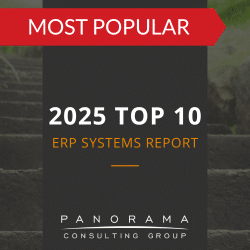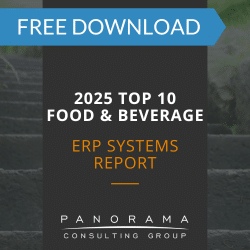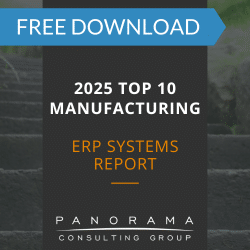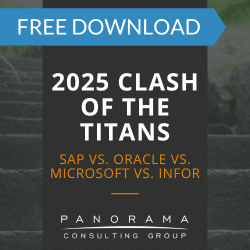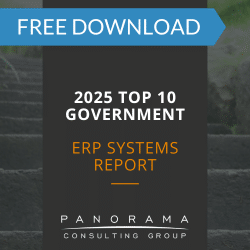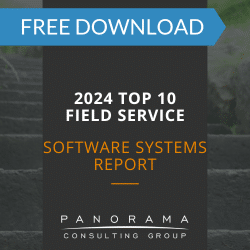What is a supply chain management system? An SCM system is a type of software that manages the flow of goods, data, and resources related to a product or service.
To maintain a competitive advantage, companies must be able to leverage SCM tools that enable them to deliver goods and services in the timeframe and manner that customers expect.
Today, we’re taking a closer look at what supply chain management involves, explaining how SCM systems and processes work, and outlining the benefits these services can provide.
Defining SCM Systems: What is a Supply Chain Management System?
The definition of a supply chain management (SCM) system is an inter-organizational solution that manages the movement of raw materials into finished products.
While there are many different types of supply chain management software that focus on different functions, there are also comprehensive supply chain management systems. These SCM systems benefit companies by managing a variety of supply chain processes, such as:
- Procurement
- Planning
- Product or service creation
- Order fulfillment
- Order tracking
- Order management
These functions shouldn’t be isolated in-house. Rather, the SCM platform must be accessible across the supply chain, encompassing every stakeholder, including:
- Suppliers
- Manufacturers
- Wholesalers
- Transportation providers
- Logistics managers
- Retailers
This ensures that everyone has visibility into the product or service as it moves along the production chain.
By gaining better oversight into these processes, companies can expedite delivery, improve the customer experience, and achieve supply chain cost reduction.
2025 Clash of the Titans
SAP, Oracle, Microsoft, and Infor each have a variety of systems that can support data-driven decision-making. We surveyed customers of these four vendors to find out what their selection and implementation process was like.
The Rise of Industry 4.0
As enterprise software systems continue to become more advanced, their application in the manufacturing realm has been called “Industry 4.0,” or the Fourth Industrial Revolution. Primarily built to enable supply chain optimization, these technologies are designed to transform the way that companies develop, manage, and distribute new offerings.
Industry 4.0 technologies include solutions such as:
- Artificial Intelligence (AI)
- The Internet of Things (IoT)
- Machine learning
- Automation
- Sensors
With this movement, it’s evident that the way companies have traditionally approached supply chain management is giving way to a more advanced and automated approach.
Take quality control, for instance. Rather than waiting until a part malfunctions or a customer calls with a complaint, companies can leverage smart tools to identify and correct issues with a product or service before they even occur. The ability to proactively recognize these problems ensures that the supply chain can continue uninterrupted.
Then, there’s the concept of lean manufacturing. Companies that operate on this model must have accurate insight into customer demand to ensure they’re producing just enough products to meet it. Intelligent SCM tools allow companies to optimize the planning and forecasting stages, save money and prevent waste and overstocks.
Moving forward, modern SCM technology won’t just make the supply chain more efficient. It’s poised to make the entire enterprise smarter and more efficient.
Key Concept: Many of the top manufacturing ERP systems incorporate Industry 4.0 technologies and also include SCM functionality.
Supply Chain Management System Benefits
1. Increased Agility
In the past, customer-brand relationships were relatively straightforward and one-directional. They moved from beginning to end with very little opportunity for change along the way.
Now, customers can engage with companies in multiple ways, and they expect personalization at every turn. Customers want the ability to control their checkout options, delivery timelines, pickup locations, and more. In turn, they will reward brands that can accommodate these demands with repeat purchases and ongoing loyalty.
An SCM system that’s rigid and unable to conform to these expectations will be unable to keep up.
Prioritizing fluidity can also help companies work around issues that threaten to slow production, such as problems with sourcing or regulatory compliance. The ability to adjust parameters as required is essential, and newer SCM technologies provide this benefit.
2. Cloud Connectivity
The daily fluctuations associated with the modern supply chain can make it difficult for on-premise legacy systems to adjust. For instance, if a sourcing issue occurs unexpectedly, a custom-coded application may not be able to modify parameters and adapt accordingly.
A cloud-based system, however, can make use of Industry 4.0 technologies to facilitate quick changes.
In lieu of a full-scale cloud migration, many companies are embracing SCM solutions that enable them to leverage their current assets while adopting certain elements of cloud-based SCM.
3. Meeting Demands for Trust and Traceability
It’s always been important for companies to have real-time access to their supply chain. Yet, increasing customer demands and changing regulatory requirements have transformed traceability from a nice-to-have feature into an imperative one.
Intelligent SCM software embeds traceability tools directly into the SCM process.
While all industries can benefit from this modern SCM software, it’s especially important in highly regulated niches, such as the food and beverage (F&B) sector. By implementing these technologies, F&B companies are positioning themselves to meet customer demands, shorten product lifecycles, and stay agile amid market fluctuations.
Learn More About the Benefits and Future of SCM
In this article, we discussed what a supply chain management system is and provided you with detailed descriptions of the SCM process. To sum it all up, SCM systems automate and integrate supply chain processes to maximize efficiency, reduce operating costs, and improve the customer experience.
Are you ready to embrace a new digital strategy and transform your supply chain? Our ERP consultants can help you weigh the costs and benefits of implementing a supply chain management system. Contact us below for a free consultation on our supply chain management services.






